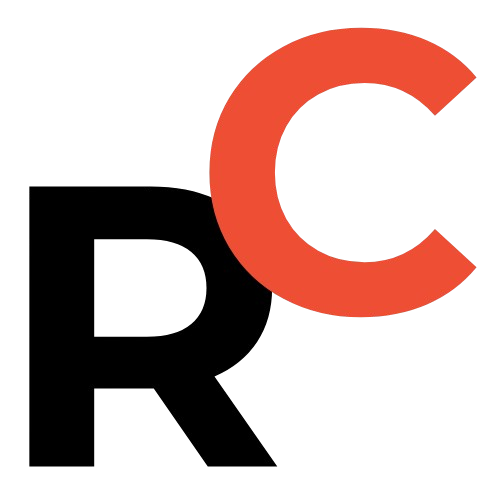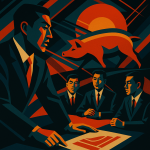Key Points
- China is directing its state-owned enterprises (SOEs) to shift from “involution” (detrimental internal competition) towards building “new quality productive forces.”
- The strategy, led by SASAC Director Zhang Yuzhuo (张玉卓), aims to make SOEs more innovative, competitive, and less wasteful, preparing them for a “second growth curve.”
- In the first half of 2025, local supervised SOEs contributed ¥3.7 trillion RMB ($510 billion USD) in added value and invested ¥2.7 trillion RMB ($372 billion USD) in fixed assets.
- The core focus is on tech innovation, creating a modern industrial system via upgrading traditional sectors and investing in emerging industries.
- SOEs are mandated to reorganize and consolidate, focusing on main businesses, core competencies, and competitive industries to eliminate wasteful competition and foster national champions.

China’s latest strategy for its massive state-owned enterprises (SOEs) is out, and it’s a big deal for anyone watching the country’s tech and economic landscape.
The government is officially telling its corporate giants to stop the “involution”—the draining, cutthroat internal competition that leads nowhere—and start building what they call “new quality productive forces.”
This isn’t just a minor policy tweak.
It’s a fundamental pivot aimed at making China’s state-owned mammoths more innovative, competitive, and less wasteful.
Here’s the inside scoop on the new playbook, straight from the top.
- Characteristic: Added Value (Local Supervised Enterprises)
- Value: ¥3.7 trillion RMB ($510 billion USD)
- Characteristic: Fixed Asset Investment (Local Supervised Enterprises)
- Value: ¥2.7 trillion RMB ($372 billion USD)
The Mandate from Beijing: SASAC Sets a New Course
On July 23rd and 24th, 2025, the heads of China’s local state-owned asset commissions got together in Beijing for a critical meeting.
The host was the powerful State-Owned Assets Supervision and Administration Commission (SASAC), the entity that basically manages China’s portfolio of SOEs.
The man leading the charge, SASAC Director Zhang Yuzhuo (Zhang Yuzhuo 张玉卓), laid out a new vision.
The mission? To “steadfastly strengthen, optimize, and expand state-owned capital and SOEs.”
In other words, they’re looking to build a “second growth curve” and make the state-owned economy a more potent strategic pillar for the nation.

Find Top Talent on China's Leading Networks
- Post Across China's Job Sites from $299 / role
- Qualified Applicant Bundles
- One Central Candidate Hub
Your First Job Post Use Checkout Code 'Fresh20'

By the Numbers: A Look at H1 2025 Performance
So, how did these state-run giants do in the first half of 2025? The numbers are pretty hefty:
- Added Value: Local supervised enterprises chipped in ¥3.7 trillion RMB ($510 billion USD).
- Fixed Asset Investment: They poured ¥2.7 trillion RMB ($372 billion USD) into fixed assets.
These figures show just how critical SOEs are to maintaining China’s macroeconomic stability.
But it’s not just about the money. Key achievements also included:
- Boosting Tech Innovation: Ramping up R&D spending and collaborative projects.
- Optimizing Industrials: Seeing strong growth in emerging industries while upgrading traditional ones.
- Deepening Reforms: Making operations more market-oriented to spark vitality.
- Strengthening Oversight: Solidifying risk management to ensure high-quality development.

ExpatInvest China
Grow Your RMB in China:
- Invest Your RMB Locally
- Buy & Sell Online in CN¥
- No Lock-In Periods
- English Service & Data
- Start with Only ¥1,000

The New Buzz Phrase: Unpacking “New Quality Productive Forces”
This phrase is at the core of the new strategy, and you’re going to hear it a lot more.
It’s not just about making more stuff. It’s about a fundamental shift in what SOEs make and how they make it.
Here’s what it means in practice:
- Major Focus on Tech Innovation: The top priority is nailing breakthroughs in key core technologies and, more importantly, actually turning those breakthroughs into commercial products.
- Building a Modern Industrial System: This means aggressively upgrading traditional industries (like manufacturing) while making big, strategic bets on emerging industries. The goal is to build new pillar industries that can lead the next wave of economic upgrading.
- Smarter Capital Allocation: They’re tasked with creating better industrial investment and financing systems to back these new ventures and foster an environment that tolerates failure and encourages experimentation.
- Concentration 1: Main Businesses
- Description: SOEs are to stick to their primary areas of expertise and operations.
- Concentration 2: Core Competencies
- Description: SOEs should reinforce and leverage their unique strengths and capabilities.
- Concentration 3: Competitive Industries
- Description: SOEs should invest and operate in sectors where they can achieve market leadership and competitive advantage.

Resume Captain
Your AI Career Toolkit:
- AI Resume Optimization
- Custom Cover Letters
- LinkedIn Profile Boost
- Interview Question Prep
- Salary Negotiation Agent

The End of “Involution”? China’s Push for Smarter Competition
One of the most interesting directives from the meeting was the call to “resist ‘involution’ (detrimental internal competition).”
Involution (nèijuǎn 内卷) is a hugely popular term in China describing the exhausting, zero-sum rat race where people work harder and harder for diminishing returns. (There’s a link to the Wikipedia page on it in the references if you want a deep dive.)
It’s a massive pain point in the country’s tech and corporate worlds, and now the government is telling its own companies to knock it off.
How? By getting smarter about allocating state capital and focusing on the “three concentrations”:
- Concentration on main businesses: Stick to what you’re good at.
- Concentration on core competencies: Double down on your unique strengths.
- Concentration on competitive industries: Invest where you can actually win.
The practical outcome here will likely be a wave of reorganization and integration. Expect more mergers and consolidation among SOEs to eliminate redundant, wasteful competition and create more focused, powerful national champions.

Building a New Kind of SOE: Governance and Operations Get an Upgrade
To make all this happen, China is also pushing for deep internal reforms to build a “new modern SOE” that is innovative, efficient, and dynamic.
The key reform areas include:
- Improving Corporate Governance: This involves strengthening the “two consistencies” – integrating Party leadership with modern corporate governance to make decision-making more scientific and standardized.
- Unlocking Market Mechanisms: Making day-to-day operations more flexible, efficient, and responsive to the market.
- Enhancing State Supervision: For SASAC, this means striking a delicate balance between “allowing flexibility” and “maintaining control.” They aim to professionalize their oversight to be less about micromanagement and more about strategic guidance and risk prevention.

The Foundation of SOE Strategy: The Role of the Party
It’s impossible to talk about SOEs in China without understanding the role of the Communist Party.
The meeting emphasized that upholding Party leadership and strengthening Party building is fundamental to achieving these business goals.
This involves everything from cultivating strong leadership teams to enforcing discipline and anti-corruption measures.
For Beijing, a “clean and upright environment” is seen as a prerequisite for high-quality development.

What This Means for You
The message from Beijing is crystal clear: The era of SOEs simply getting bigger is over.
Now, it’s about getting smarter, more innovative, and more strategically focused.
By tackling “involution” head-on and championing “new quality productive forces,” China is retooling its state-owned industrial base for the next decade.
This strategy will be a core part of the upcoming “15th Five-Year Plan” (2026-2030) and is a must-watch trend for any investor, founder, or analyst interested in the future of China’s economy and its powerful state-owned enterprises (SOEs).

References
- Local SASAC Heads Seminar Held in Beijing, Vigorously Developing New Quality Productive Forces Suited to Local Conditions to Better Play the Strategic Supporting Role of the State-Owned Economy – State-owned Assets Supervision and Administration Commission of the State Council (SASAC)
- Official English Website – State-owned Assets Supervision and Administration Commission of the State Council (SASAC)
- Involution (China) – Wikipedia

![Small Nuclear Reactors & Data Centers: Why China is Leading the Charge [FreshFromChina]](https://freshfromchina.com/wp-content/uploads/2025/05/Small-Nuclear-Reactors-Data-Centers-Why-China-is-Leading-the-Charge___FreshFromChina-150x150.png)

![China's A-Shares Roar: Market Surges on PBOC Moves & Aerospace Boom – What Investors Need to Know [FreshFromChina]](https://freshfromchina.com/wp-content/uploads/2025/05/China_s_A-Shares_Roar__Market_Surges_on_PBOC_Moves___Aerospace_Boom__What_Investors_Need_to_Know____FreshFromChina-150x150.png)
